- Razor: Gillette Slim
- Blade: Lord Classic
- Brush: Vie-Long #13051M
- Pre-Shave: Prep Original
- Lather: Taylor of Old Bond Street Peppermint
- Aftershave: Barber No3 Marmara
- Additional Care: Alum Block
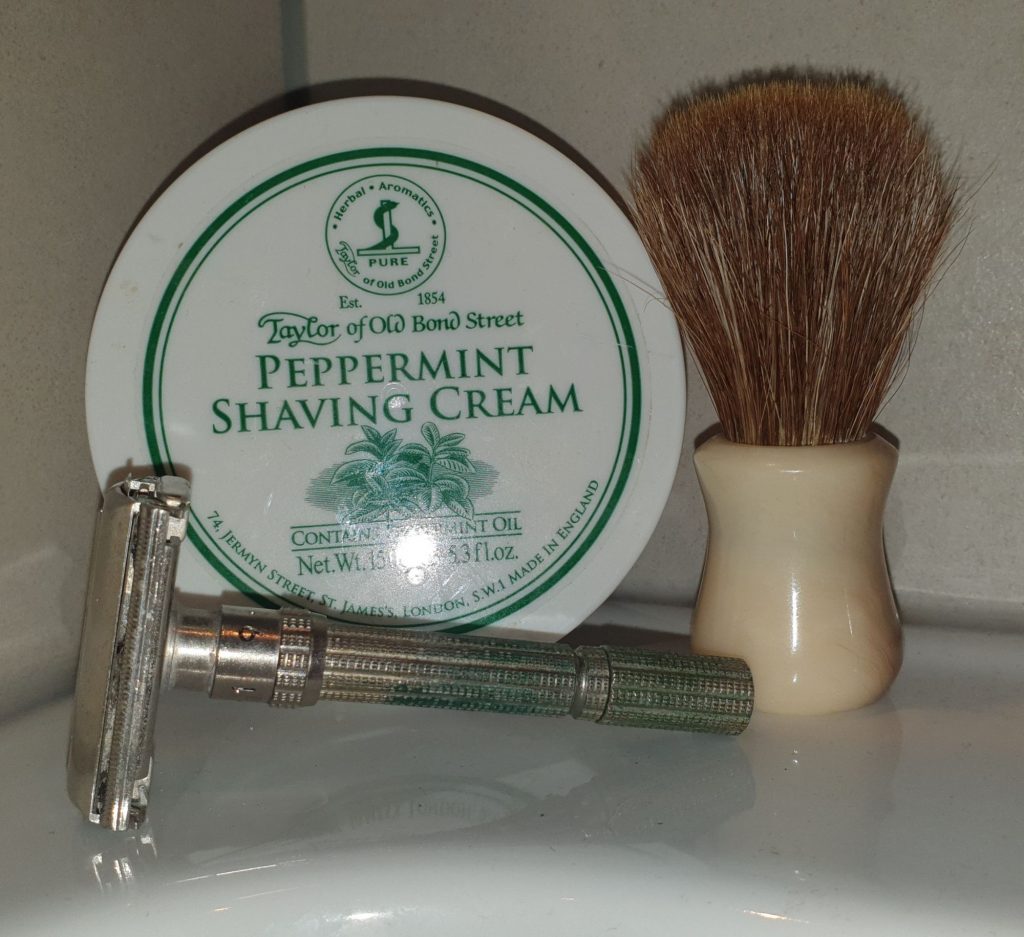
A fresh shave while fresh snow is coming down outside


A fresh shave while fresh snow is coming down outside
The origin of the term ‘safety razor’ is a little unclear. As documented over at razors.click, the term did not originate with the Kampfe brothers as so often claimed. But no matter who came up with it, or when, it was in common enough use by 1887 that Gustavus Rein explicitly used it both as the title and in the body of his patent. Which is interesting enough, but what really caught my attention is that the razor that Gustavus Rein patented was a twofer. Not only was it a hoe-style wedge razor, but it could also be used as what we today would call a shavette.
Continue reading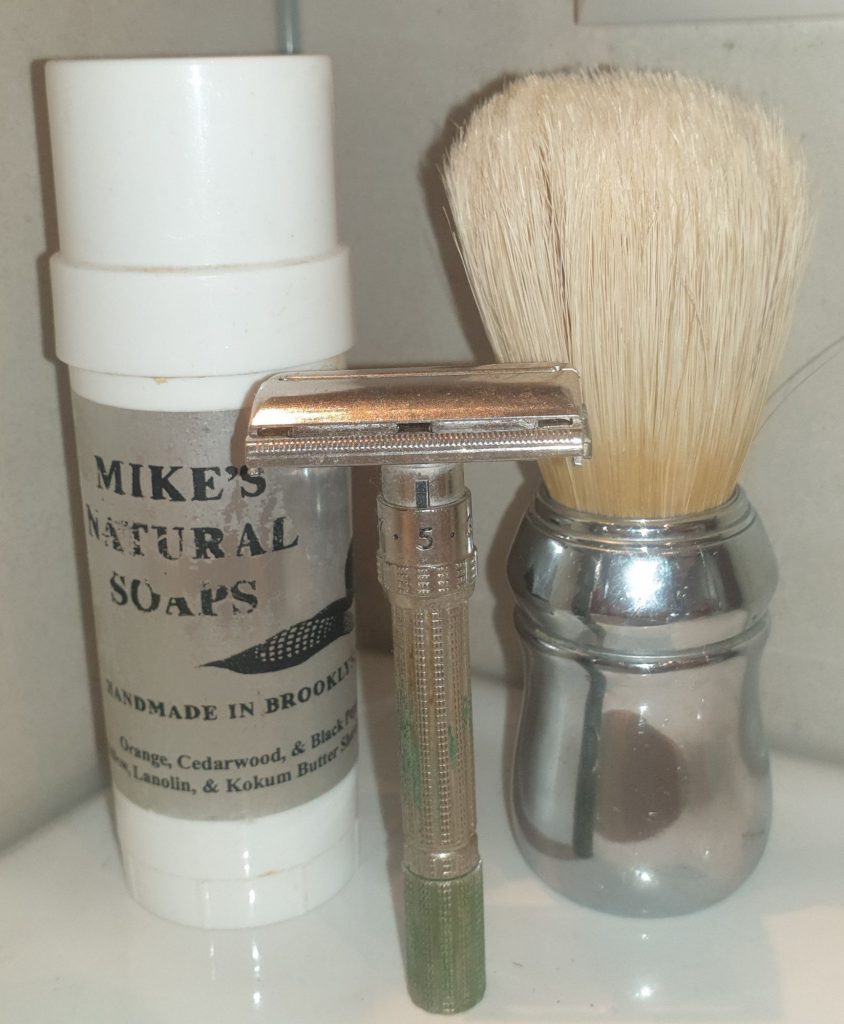
Another week, another vintage razor. The Slim may be way older than me, but it has certainly kept it’s edge – pun intended.
Razor: Gillette 1958 TV Special
Blade: Lord Classic
Brush: Semogue TSN LE 2012
Pre-Shave: Proraso Pre Shave Cream
Lather: Asylum Shave Works Flying Mango
Aftershave: Barber No3 Marmara
Additional Care:
Alum Block
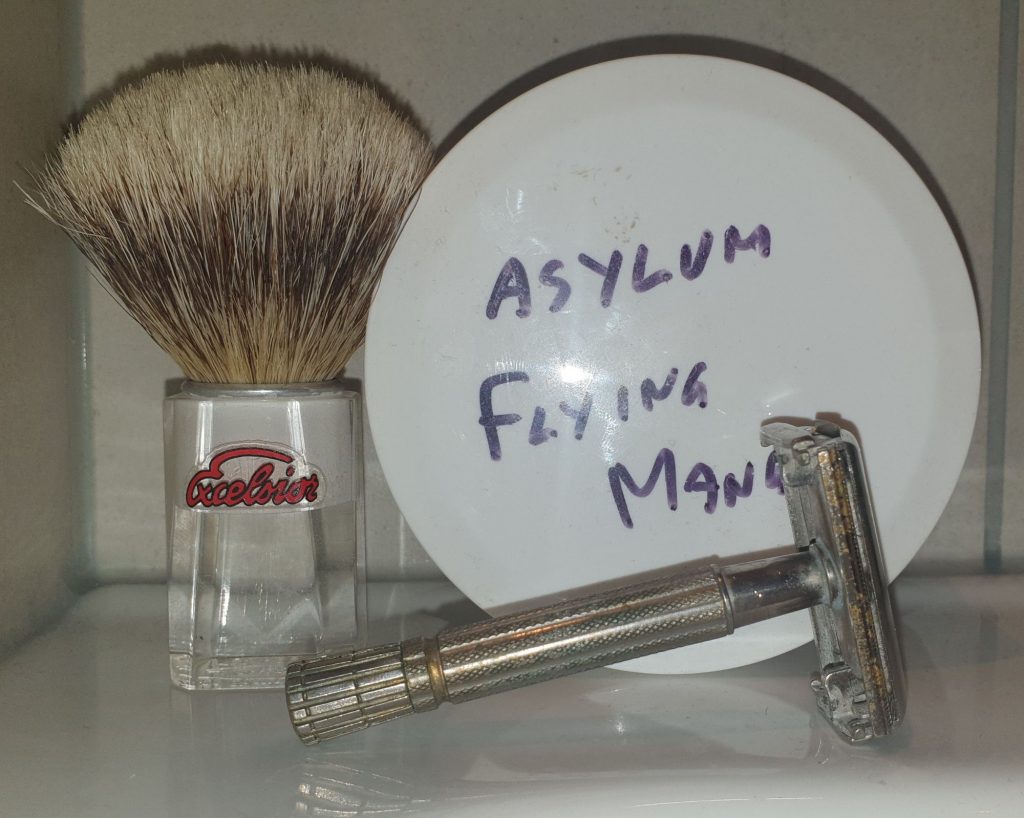
Yet another fine Friday shave. A quiet moment of Zen before the workday is just the thing.
Metallic razor strops must been popular in the middle of the 19th century. Not that long after the self-corroding bimetal hone and the polished metal strop, Jacob Wolf got a patent for an improvement in razor strops. An improvement that included, you guessed it, metal.
Zinc, to be specific. As most of you know, zinc is a fairly soft metal,1 so using it for stropping or honing a razor at least shouldn’t damage the harder steel of the razor.
Continue reading
A herby midweek shave, making me hungry for a lamb roast… rosemary and tthyme does that.
A couple of years after the invention of the self-corroding metal hone, a Mr Milo A Holcomb was granted a patent for a metallic razor strop. A new and improved polished steel razor strop, to be exact. And compared to a hone what would self destroy through galvanic corrosion, it is a clear improvement.
As can be seen from the drawing, the invention was pretty simple. And the explanation in the patent text is pretty straightforward too. It explains not only how to make the metallic razor strop, but how to use it too:
I form the blade A, of hardened steel, and polish it to the highest degree. The blade is, in general, sufficiently thin to render it more or less flexible; while the handle B, may be thicker, if desired, as shown in the drawings, and may be of steel, iron, or any other convenient and suitable material. The cross section of the blade A, is generally Somewhat rounded, as shown in Fig. 4.
From US patent 25,265
The razor should first be brought to a keen edge by means of a hone, or any other instrument in common use. It is then to be applied to the polished surface of this strop till the finest and Smoothest edge is obtained. By its flexibility, the strop may be curved downward, as shown in Fig. 3, so that its surface will come into a little closer contact with the edge of the razor, than will the hone by which the razor is sharpened; and thus it effectually polishes, as it were, the very edge of the razor to the finest keenness.
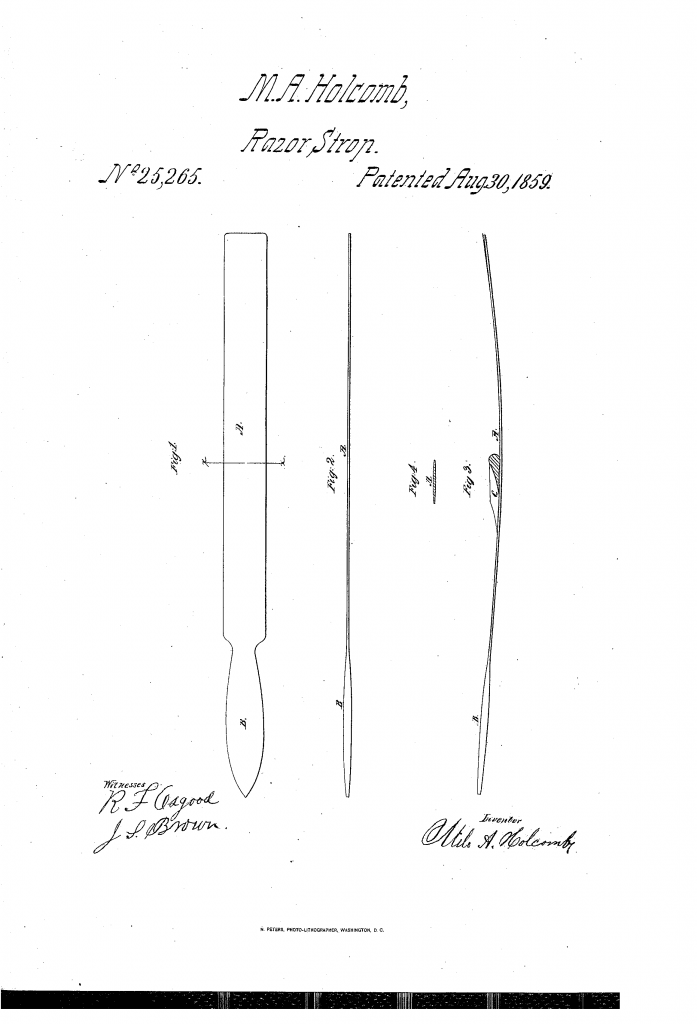
The strop were to be made out of thin, flexible steel. A natural choice at the time would been a spring steel. That is a medium to high carbon steel with a high yield strength. In 1859, when the metallic razor strop was patented, this would likely been a blister or crucible steel.
I don’t use nor hone straight edge razors, so I’m a bit lacking in knowhow on how to put a keen edge on a straight. I am however not entirely convinced that running a already sharpened blade over a polished steel surface would do much good. But I’m more than happy to be corrected on that point if someone actually knows the answer.
Milo does point out that he isn’t intending for the flexible steel strop to burnish1 the razor. But his description of lessening and polishing the edge of the razor sounds very much like burnishing to me. Perhaps Milo had some way of distinguishing between burnishing and burnishing…
The patent is long expired. And since a quick search shows no stainless steel hones for sale, I would say the marked for this kind of hone has long expired too.
You can read the full text of the patent for the metallic razor strop at Google Patents.
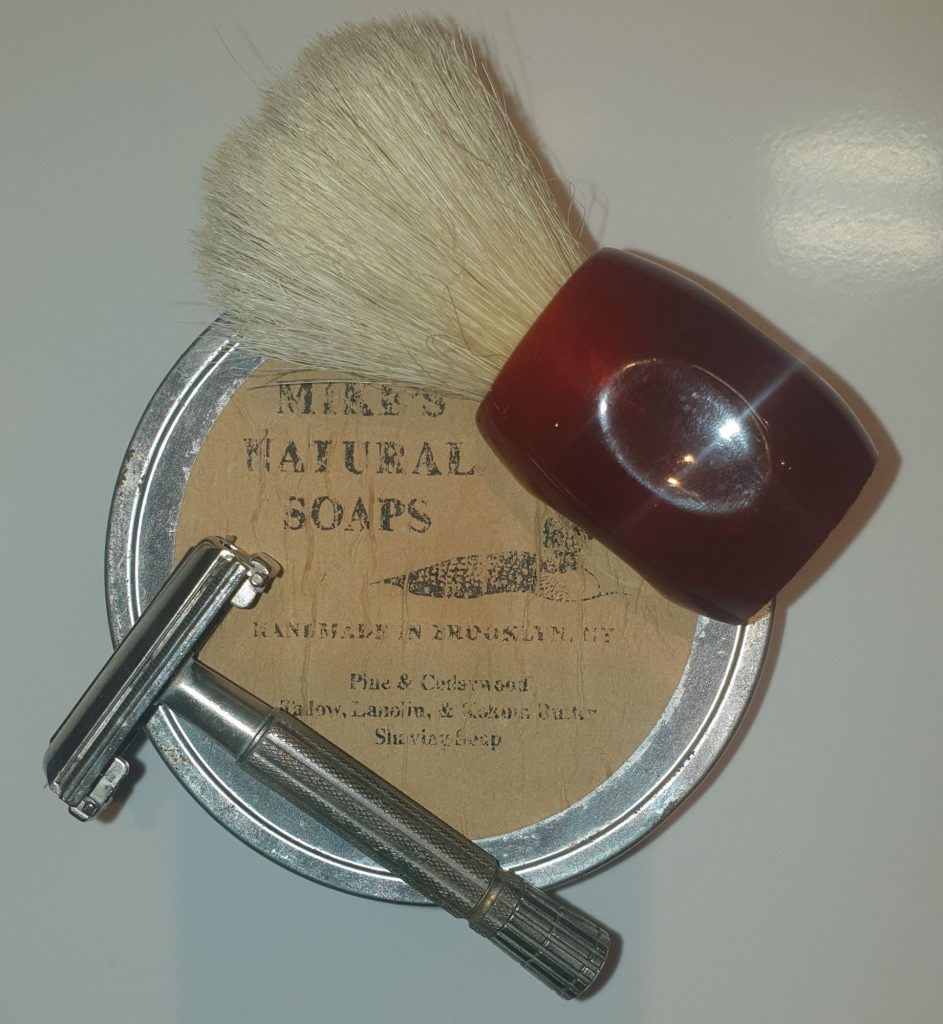
Another week, another great shave with a vintage razor.
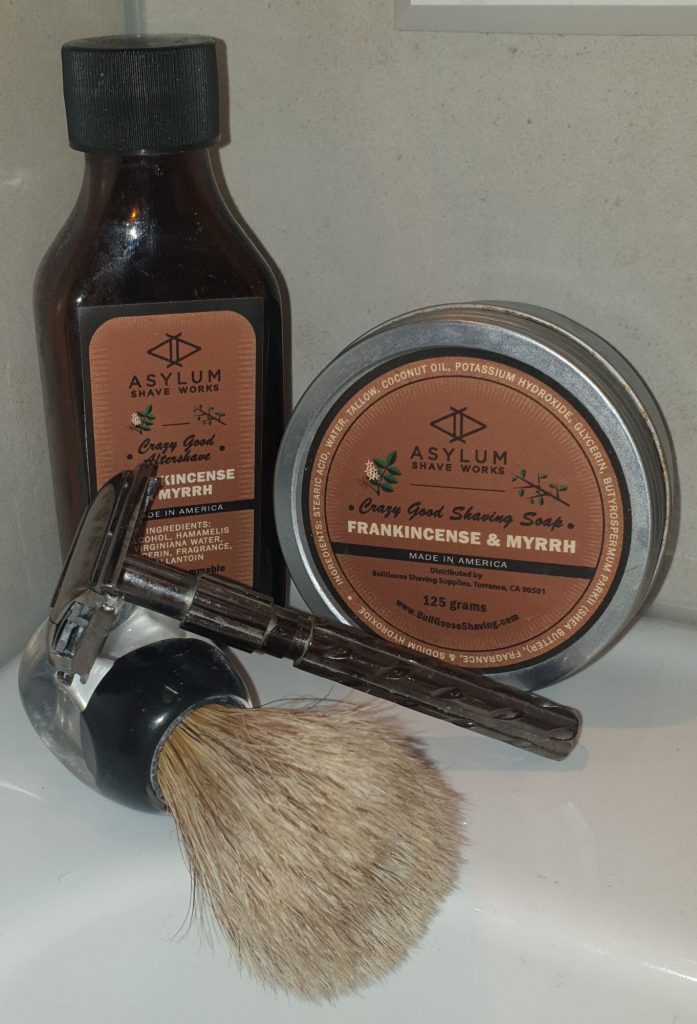
A fast Friday shave on a very cold morning.
Every age has its share of cranks and quacks. These are usually found peddling the miracle cure of the day – be it radioactivity, magnetism, or – as it was in the middle of the 19th century – electricity. And after reading the patent description for a metallic hone, I’m unsure if old William was a crank or a quack.
William was awarded his patent in 1855, making this one of the oldest patents I’ve looked at so far. And to William’s defence, this is one of the more straightforward and easy to read patents I’ve seen in a while.
Continue reading